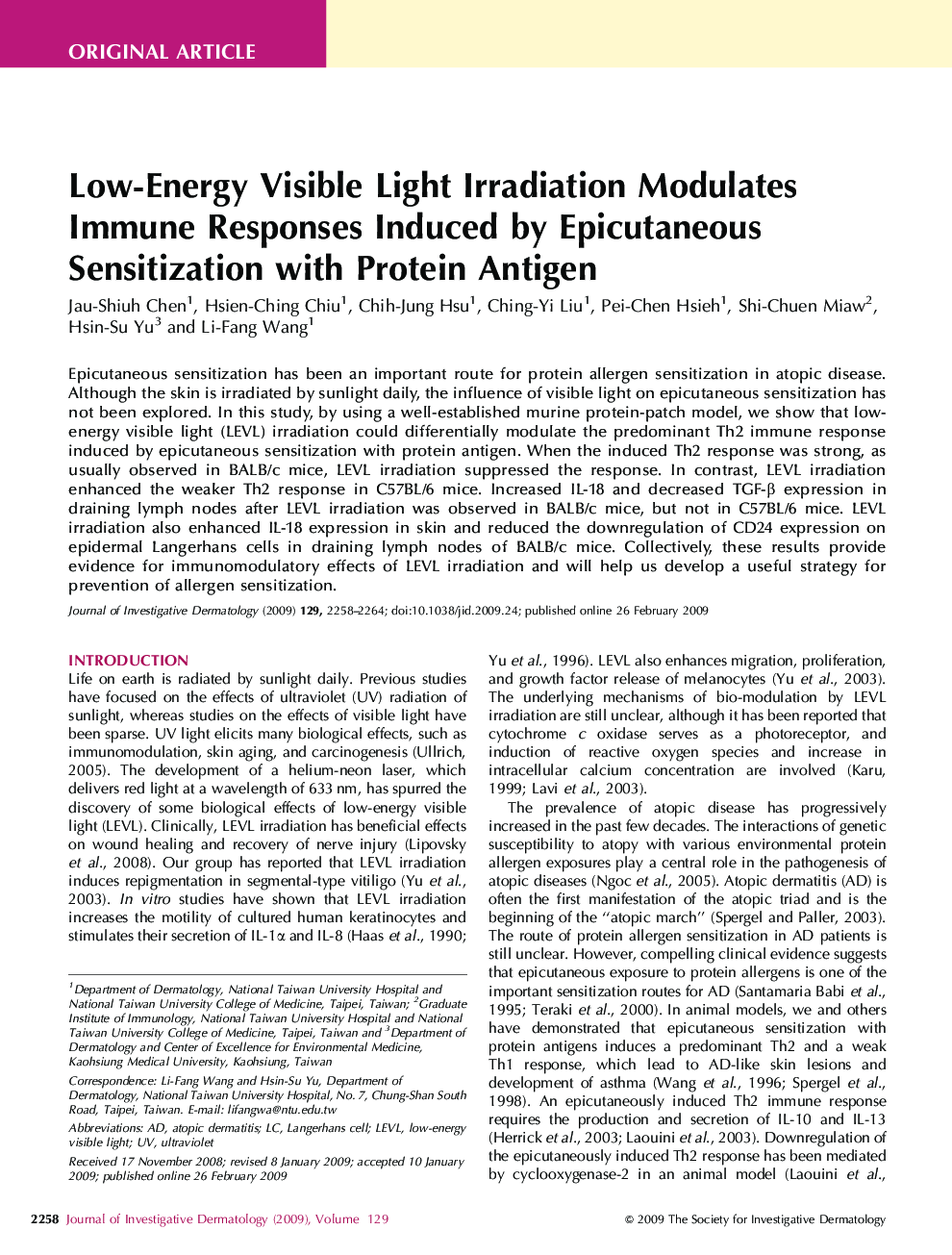| Article ID | Journal | Published Year | Pages | File Type |
|---|---|---|---|---|
| 3217606 | Journal of Investigative Dermatology | 2009 | 7 Pages |
Abstract
Epicutaneous sensitization has been an important route for protein allergen sensitization in atopic disease. Although the skin is irradiated by sunlight daily, the influence of visible light on epicutaneous sensitization has not been explored. In this study, by using a well-established murine protein-patch model, we show that low-energy visible light (LEVL) irradiation could differentially modulate the predominant Th2 immune response induced by epicutaneous sensitization with protein antigen. When the induced Th2 response was strong, as usually observed in BALB/c mice, LEVL irradiation suppressed the response. In contrast, LEVL irradiation enhanced the weaker Th2 response in C57BL/6 mice. Increased IL-18 and decreased TGF-β expression in draining lymph nodes after LEVL irradiation was observed in BALB/c mice, but not in C57BL/6 mice. LEVL irradiation also enhanced IL-18 expression in skin and reduced the downregulation of CD24 expression on epidermal Langerhans cells in draining lymph nodes of BALB/c mice. Collectively, these results provide evidence for immunomodulatory effects of LEVL irradiation and will help us develop a useful strategy for prevention of allergen sensitization.
Related Topics
Health Sciences
Medicine and Dentistry
Dermatology
Authors
Jau-Shiuh Chen, Hsien-Ching Chiu, Chih-Jung Hsu, Ching-Yi Liu, Pei-Chen Hsieh, Shi-Chuen Miaw, Hsin-Su Yu, Li-Fang Wang,
